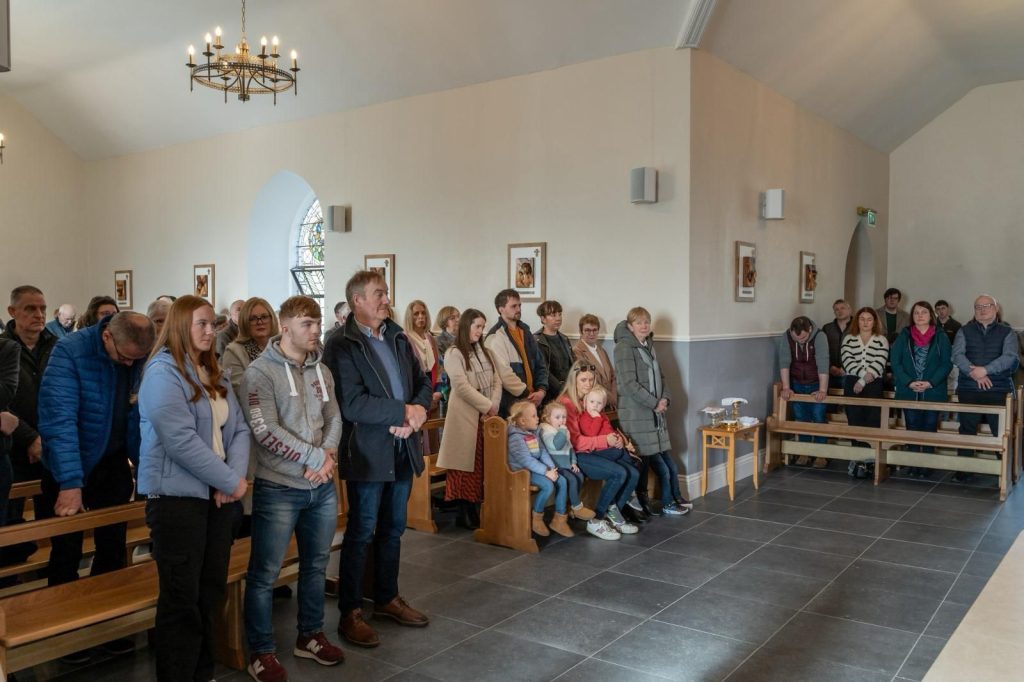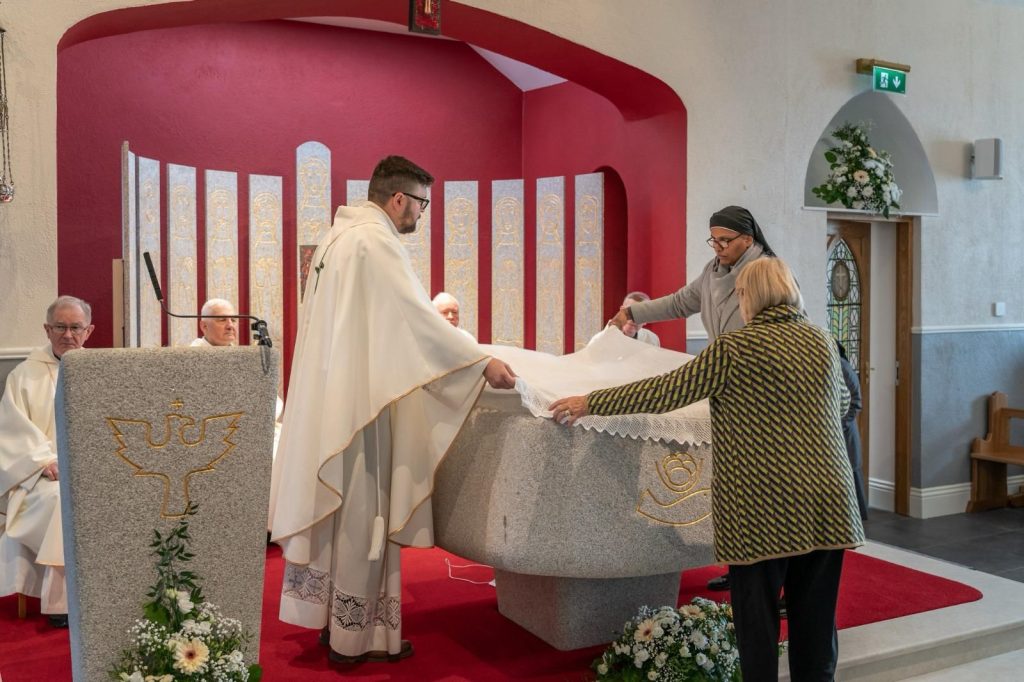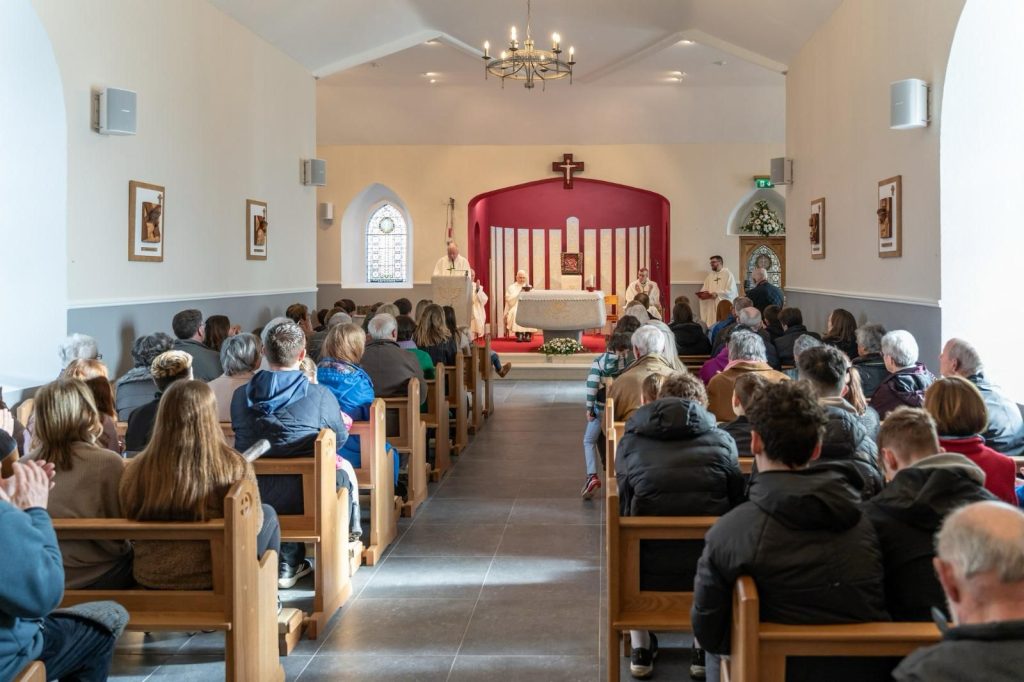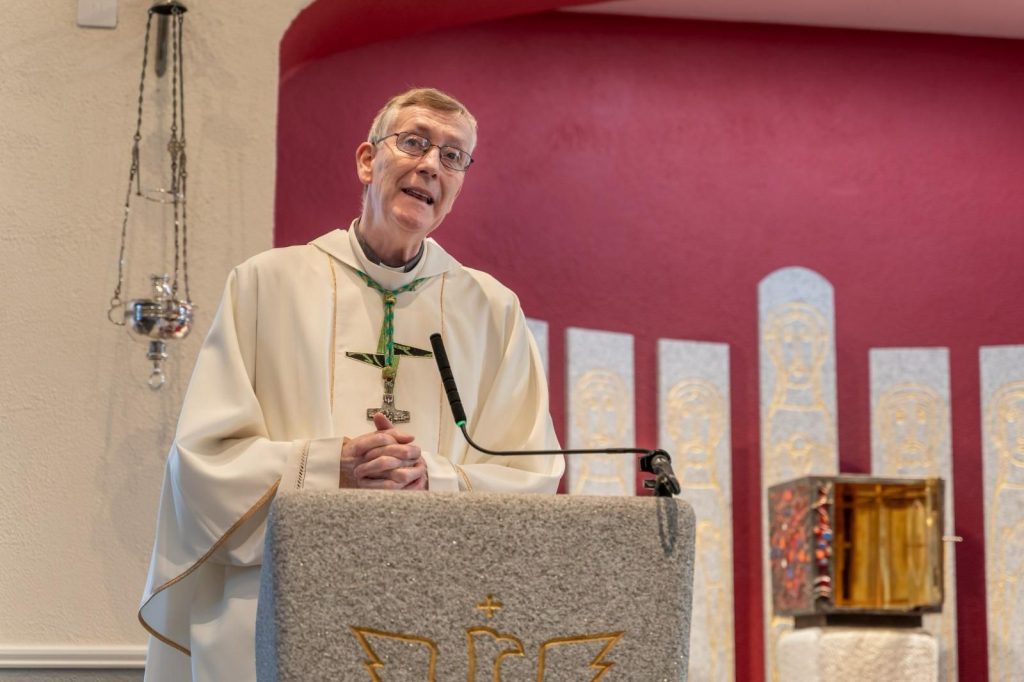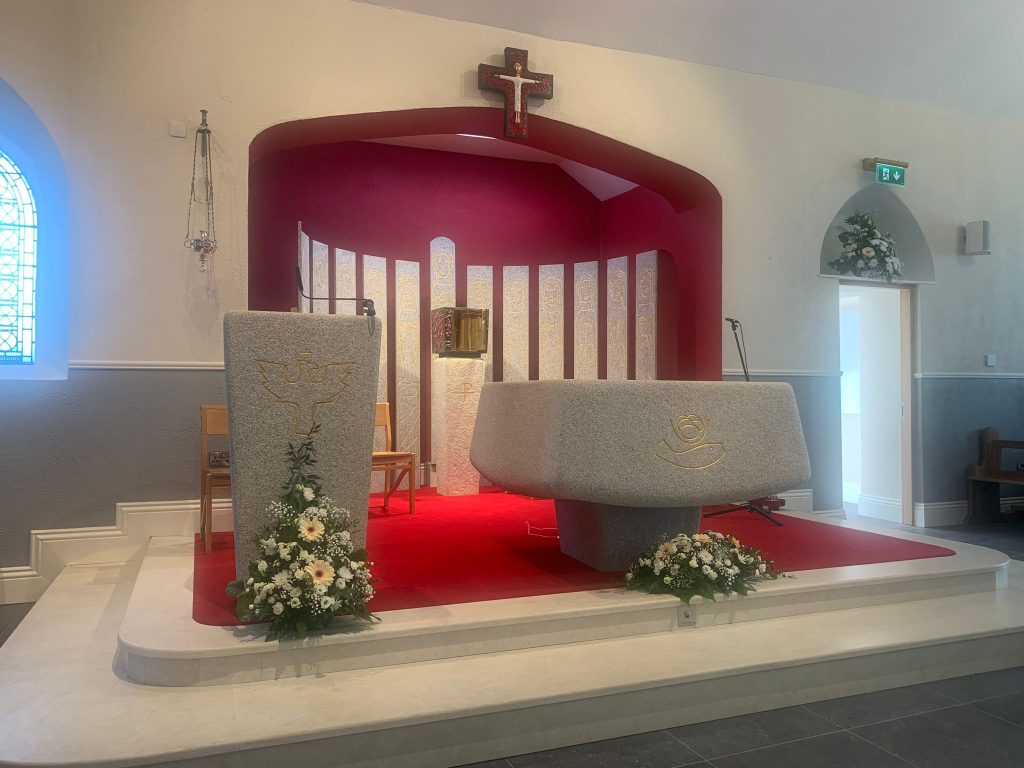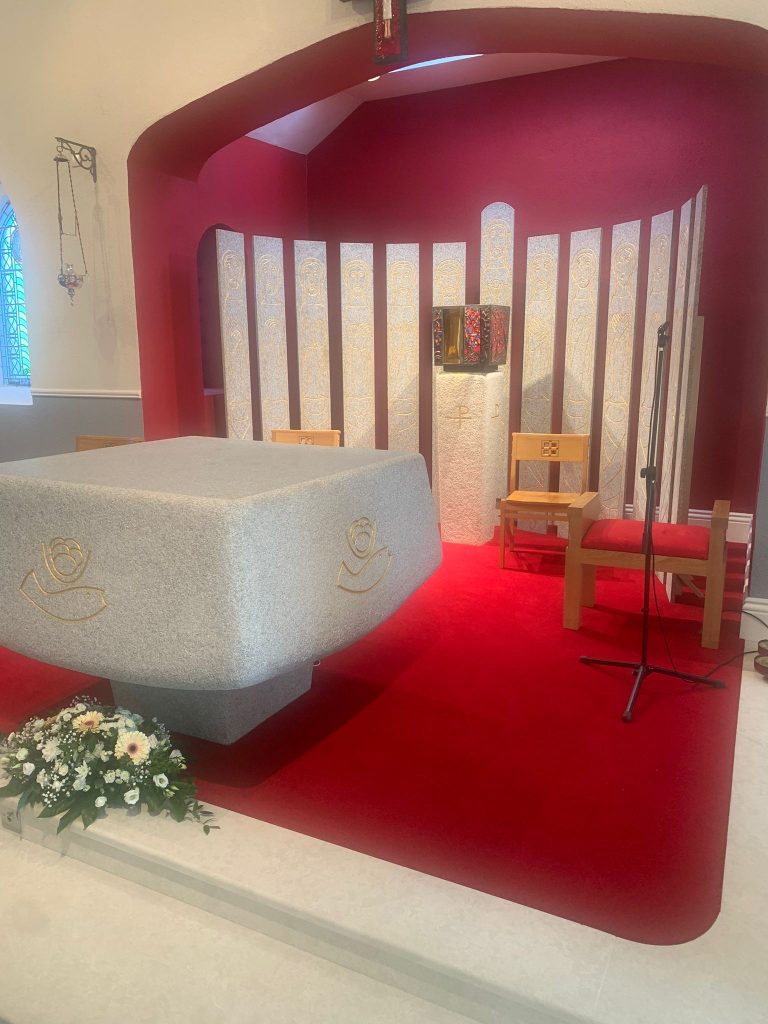Sixth Sunday in Ordinary Time – Year B: 11.02.24
Introduction:
We gather to celebrate the re-dedication of Holy Cross Church here in Ratheniska, a Church that goes back to the year 1800, the oldest of the three parish churches, the third to be completely renovated. This project has been ongoing since late last summer; I recall getting a sneak preview as I parked for the ploughing last September! Six months later it’s great to be here, to join Msgr. John and his team and you the people of Ratheniska, who have such great pride in this place and rightly so.
The leper and the healer meet in our gospel. Jesus reaches out beyond the confines of pharisaic ritual and Jewish custom. Jesus puts Himself completely at odds with acceptable social mores by touching this leper, and no less healing him.
Once again Jesus responds, not as a first century lawyer or clinican but as the Son of God who wants all of us to be saved, to be embraced, to be healed, to be reached out to.
Our leprosy today is sin and it too is contagious, in that one sin leads to another. Pope Francis often uses the phrase “the field hospital” to refer to his bruised image of church and its overarching arms of compassion. On a morning when we rededicate this beautiful church and compliment the many that have brought it to this point, let’s more importantly rededicate ourselves to being that “field hospital” to one another … we begin by blessing water in the asperges rite …
Homily:
I’m just back from Rome late last night. I was there leading an Irish delegation, reflecting on our need for ongoing formation or accompaniment in our ministry. While in Rome, as many of you know, there is a Church at every street corner or lending a particular character to a Piazza square. In the Churches are superb pieces of art – Caravaggio in the Church of St. Louis of France; Rembrandt’s elsewhere and of course nothing to beat Michelangelo’s Pieta in St. Peter’s, Basilica.
The conference attendees were treated to a splendid concert on Friday night last in the imposing Basilica of St. John Lateran. One of the compositions titled ‘Jesus is my life’, of which the fifth verse went:
“Jesus is the unwanted to be wanted,
Jesus is the leper to wash him,
Jesus is the beggar to give Him a smile,
the Drug addict to be friend him,
the prostitute to remove from the danger,
and befriend her in Christ” .
The book of Leviticus grates with the inclusive society we now live in, or are we as inclusive as we think we are? Sometimes the more liberal we become the more intolerant we are to alternate voices. We listen to Leviticus’ prescriptions around leprosy. It doesn’t make for easy listening. Those words of Leviticus coming at the end of the first reading: “the leper must live apart, must live outside the camp” are disturbing. None of us like to feel excluded or left outside. As Jesus reaches out to touch the leper, he too becomes subject to the same restrictions as those suffering from the disease.
February 11th also marks the feast of Our Lady of Lourdes, as we observe ‘World Day of the Sick’. Ratheniska Church was 58 years old when the apparitions to the fourteen year old Bernadette Soubirous were happening at Massabielle in Lourdes. There were people gathering for Mass here, as Our Lady spoke to the young Bernadette. I’m very conscious there is a richly embedded Lourdes tradition here in Portlaoise parish; I look forward to welcoming the relics of St. Bernadette on a tour of Ireland on the 7th and 8th of October next.
The sick are central to Lourdes, without the sick, there is no pilgrimage. The sick and disabled are often excluded from society and kept at a distance. In Lourdes they lead every procession, are front and central in every pilgrimage. If our parishes were to really become these “field hospitals” the sick, the excluded, those on the margins would always be out front and centre.
I see mention of St. Aonghus who was part of the seventh century monastic community founded by St. Fintan of Clonenagh was the one attributed at bringing faith to Ratheniska. When we think of those great monastic communities, what went through the mind of those last monks as they faced the Vikings, the Normans, whatever group was besieging their monastic compound. What might the young monk think as he blew out the candles for the last time as the Vikings were in sight? Was it the end of a faith? Was it the end of people gathering to pray? Indeed where is that cell today that St. Aonghus set up here in Dysart? We all know faith survives and lives on.
And this morning we celebrate a further chapter in the faith story of Ratheniska on this Quinquagesima Sunday, three days before Lent and fifty days before Easter Sunday. I compliment Msgr John and the team here who have executed a splendid job. I’ll let Msgr. John mention those by name later, but if I might single out the beautiful altar elements that found their way from a Mercy Convent in Templemore, it shows how faith lives on in many different ways.
In his message for World Day of the Sick, today, Pope Francis emphasises the importance of healing relationships and the need for compassionate care in all our lives, especially the sick. He asks for a shift towards a culture of tenderness and compassion. I pray in the field hospital that is the Church of the Holy Cross, Ratheniska, that this culture will be deeply embedded for many decades to come.
St. Aonghus, pray for us.
St. Peter & Paul, pray for us.
Our Lady of Lourdes, pray for us.
